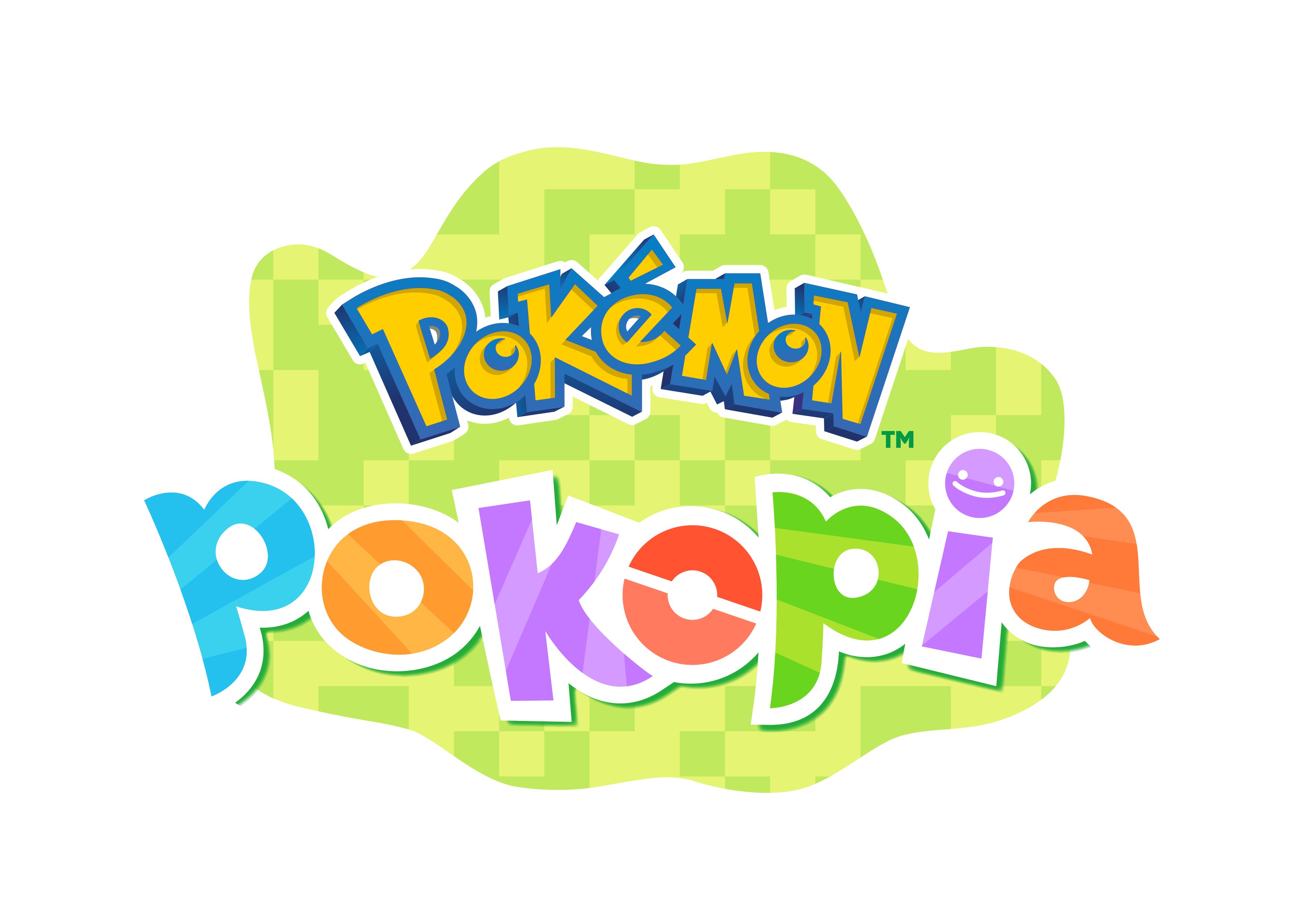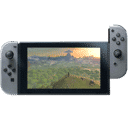
Summary:
Pokémon Pokopia invites you to slow down, breathe, and settle into a relaxing life on Nintendo Switch 2. You awaken as a Ditto that has taken on human form, dropped into a place where humans and Pokémon once lived together in easy harmony. Now that balance has faded, and it is up to you to bring warmth back to the land. Under the watchful (and slightly eccentric) eye of Professor Tangrowth, you explore overgrown paths, learn moves directly from Pokémon, and use those abilities as tools to restore nature, build homes, and welcome new friends. Every step you take nudges Pokopia closer to the utopia it once was, from crafting cozy habitats to inviting curious residents like Peakychu, Mosslax, and Smearguru. Instead of chasing high-stress challenges, you spend your days growing a settlement where everyone belongs, one small act of care at a time. Pokémon Pokopia blends the charm of familiar creatures with the calm of a gentle life simulation, creating a world that feels like a soft blanket after a long day.
Welcome to the gentle world of Pokémon Pokopia
Pokémon Pokopia is built around one simple feeling: what if living with Pokémon felt like coming home? Rather than racing through battles or sprinting to the next badge, you arrive in a quiet corner of the world that has been left behind. Paths are cracked, homes are gone, and the land feels more like a memory than a place to live. Yet there is still warmth here. Wild Pokémon wander through patches of grass, curious rather than hostile. Old tools lie half-buried in the soil, hinting at a time when humans and Pokémon worked side by side. From the moment you step into this world, the pace is slower, the stakes feel personal, and the focus shifts from winning to caring. The charm comes from small moments: watching the sun settle behind a hill while a Pokémon naps nearby, hearing distant footsteps in a forest that once echoed with laughter, or noticing how a single lantern can make an empty street feel safe again.

Playing as Ditto in human form
Most adventures in this universe start with a kid from a small town. Pokémon Pokopia does something far more unusual: you begin as Ditto, transformed into a human. That twist changes everything. You are not just another trainer stepping into a well-known journey; you are a Pokémon figuring out what it means to be someone who walks on two legs, speaks with a human voice, and holds tools instead of learning TMs in the usual way. The transformation raises playful questions. How does a being built for mimicry handle a stable shape? How does a former blob understand things like doors, beds, or recipes? Because your origin is different, your bond with other Pokémon feels different too. You understand them from the inside out. When you watch a Pokémon use a move, you are not just impressed; you instinctively feel how the move flows through its body. That empathy becomes the heart of your journey, turning your story into one long exercise in understanding, not domination.
Meeting Professor Tangrowth in a forgotten refuge
Your first real anchor in Pokopia is Professor Tangrowth, a wonderfully odd figure who seems to live between worlds. They have settled in a place where humans and Pokémon once shared their days, but now the buildings have slipped into disrepair and most residents have drifted away. Tangrowth’s appearance is immediately charming and strange. Their body is wrapped in vines and tendrils, yet they have clearly tried to adopt human tools and habits: a pair of goggles perched where eyes might be, a tool belt hanging from twisted vines, maybe even a notebook clutched in a tangle of hands. It is as if they studied humanity from a distance and decided to cosplay as a professor. Through them, you slowly learn what Pokopia used to be—busy markets, shared gardens, and workshops where humans and Pokémon used moves together to build, not fight. Tangrowth’s mix of wisdom and awkward attempts at “acting human” gives the story its heart, making each conversation feel like a blend of lecture, comedy, and quiet confession.
Building a utopia where Pokémon and humans live in harmony
The central dream of Pokémon Pokopia is simple to say but satisfying to chase: rebuild a place where humans and Pokémon live side by side in comfort. Instead of ticking off objectives on a checklist, you are nudging a broken community back to life. You start small, patching up paths, clearing debris, and lighting abandoned corners so Pokémon feel safe lingering nearby. As your efforts grow, you begin to see tangible change. A bare field slowly fills with wildflowers; a dusty square gains benches, lanterns, and stalls just waiting for future residents; a lonely house becomes a welcoming home with soft light spilling out onto the path. Harmony here is not a slogan; it is something that appears in little details. You might see a Pokémon napping on a porch that did not exist a few days ago, or watch two species that would normally bicker quietly sharing space around a pond you restored. Every board you place, every patch of soil you tend, is another stitch in a patchwork town slowly coming back together.
Learning moves from Pokémon to shape the land
One of the smartest touches in Pokopia is how it turns familiar moves into practical tools. Instead of treating Pokémon techniques purely as attacks, the world invites you to see them as ways to work with nature. When you watch a Pokémon use a move, your Ditto-born body instinctively studies the motion, the rhythm, and the energy behind it. Over time, you learn to echo those abilities in a form suited for everyday tasks. A cutting move might become a way to clear overgrown brush or trim hedges into pleasing shapes. A gentle water move could be repurposed into a way to help crops grow or to fill small canals that bring life back to dried-out fields. Nothing feels like a chore when it is tied to a move you recognize and love. Instead of picking up generic tools, you are wielding the spirit of Pokémon techniques, turning the land itself into a canvas for your newfound skills.
Designing habitats that attract more Pokémon
Pokopia never forgets that different Pokémon are drawn to different kinds of places. That idea sits at the core of the habitat system. As you explore, you begin to understand which environments certain species prefer: a damp, mossy grove for one, a sunlit cliff for another, and a quiet, lamp-lit square for a Pokémon that enjoys watching the world drift by. Using the moves you have learned and the building options you unlock, you tune each corner of the settlement to feel just right. Maybe you redirect a stream to create a little waterfall, or arrange trees so their branches form a shelter from the midday sun. When you get it right, the world responds. New Pokémon appear, sniff around, and slowly begin to treat the place as theirs. The thrill is not just in “collecting” them, but in knowing that your care made them feel at home, the way a well-tended garden naturally attracts birds, butterflies, and all the small signs of life that make a place feel alive.
Getting to know Peakychu, Mosslax, and Smearguru
Pokopia introduces a trio of especially curious residents that instantly stand out even if you have played every mainline adventure. Peakychu looks like a distant cousin of Pikachu that spent too many days under a cloudy sky. Its fur is pale, its ears droop a little, and it carries an energy that feels gentle rather than sparky. Mosslax is a reimagined Snorlax, wrapped in soft moss with a blooming flower crowning its head, as if the forest itself decided to claim this famous napper as part of the scenery. Smearguru takes the familiar painterly Smeargle and leans hard into the artist angle, giving it a tail that seems dipped in every color of the rainbow and a look that says it is always halfway through its next masterpiece. These Pokémon are more than visual twists; they represent how Pokopia blends the old and the new. Each one hints at stories, routines, and needs that you gradually uncover as you build spaces that suit their personalities.
Peakychu, the soft-spoken spark
Peakychu feels like a quiet answer to the usual electric mascot’s boundless energy. Rather than zipping from place to place, it moves at an unhurried pace, ears drooping just enough to look endearing rather than sad. You might find it tucked under a tree during a drizzle, watching raindrops roll off leaves, or lingering near dim lanterns as evening settles. Its presence nudges you to think about how light and weather shape mood. Creating an ideal space for Peakychu means paying attention to gentle glows, cozy shelters, and little corners where someone who loves quiet moments can feel safe. Over time, it starts to feel like Peakychu is the guardian of calm evenings in your town, the one who reminds everyone that it is okay to simply sit and listen to the sound of the rain for a while.
Mosslax, the living hill of greenery
Mosslax looks like what happens when a Snorlax decides to become part of the landscape. Its massive body is swaddled in moss, and the flower blooming on its head gives the impression that it has been lying still long enough for nature to claim it fully. Encountering Mosslax is like stumbling across a moss-covered boulder that suddenly yawns. To make this sleepy giant feel at home, you focus on soft ground, dappled shade, and the kind of quiet spots that invite long, unbroken naps. Maybe you clear a space beneath a cluster of trees, set up a gentle stream nearby, and plant wildflowers that sway lazily in the breeze. In return, Mosslax adds a sense of grounded stability to your settlement, like an anchor that never moves. Seeing it snoozing peacefully in a spot you designed makes the whole area feel safe, as if nothing truly bad could happen in a place where such a relaxed creature chooses to sleep.
Smearguru, the wandering painter
Smearguru is the kind of Pokémon that leaves a trail of color wherever it goes. Its tail looks like a brush dipped in fresh paint, and its fur often carries little smears of color that hint at recent projects. When Smearguru strolls through your town, it feels like watching an artist inspect a gallery that is still under construction. The habitats and buildings you create become its unofficial canvases. Maybe it adds patterns to fences, sprays playful shapes onto walls, or decorates stones along the riverbank. To make Smearguru feel truly welcome, you give it spaces that invite creativity: open plazas where murals can bloom, blank wooden walls begging for a splash of personality, and quiet corners where an artist can sit in thought. Over time, your settlement becomes a collaborative work between your planning and Smearguru’s instinctive flair, turning everyday structures into pieces of visual storytelling.
Day-to-day life, activities, and goals in Pokopia
Life in Pokopia is built from small, repeatable rituals that slowly add up to something meaningful. You might start a day by checking on crops that rely on water-based moves to thrive, sweeping fallen leaves from paths with a gust of borrowed wind, or visiting Professor Tangrowth to share new observations about local Pokémon behavior. From there, your goals are less about racing toward an endgame and more about choosing which corner of the world needs love today. Perhaps a new Pokémon has been spotted on the edge of town, drawn in by a half-finished habitat. Maybe a neglected building begs for repairs so it can become a home, shop, or gathering spot. You are never forced into a single path; instead, you feel gently guided by the needs of the land and the creatures who inhabit it. Even on quiet days when you simply decorate, rearrange, or stroll around at dusk, progress is still happening because the settlement grows more lived-in and personal with every small action.
Expressing yourself through building, decorating, and style
One of the joys of Pokopia is how easily your personality seeps into the town you are rebuilding. Every board you place, every lantern you hang, and every patch of ground you choose to pave or preserve as grass says something about what kind of place you want this to be. Do you lean into rustic charm, with wooden beams, stone paths, and soft, warm light? Or do you embrace brighter colors, playful shapes, and a sense that Smearguru has been allowed to run wild on every surface? Even your own appearance as Ditto-in-human-form can echo these tastes. Maybe you gravitate toward simple, practical outfits that blend into the scenery, or perhaps you favor looks that make you stand out as the town’s unofficial heart. Over time, visitors could guess your style just by walking through the square or peeking at the houses you have helped build. That feeling—that the world reflects you, even in subtle ways—makes each return to Pokopia feel like catching up with an old friend rather than loading up a simple save file.
Why Pokémon Pokopia stands out among cozy life sims
A lot of relaxing games invite you to farm, decorate, and chat with charming neighbors, but Pokopia brings a unique twist by putting Pokémon and identity at the center of everything. The decision to cast Ditto as the lead does more than provide a fun origin story; it builds an entire experience around empathy and transformation. You are constantly learning, adapting, and using moves not to overpower others, but to lift the world around you. The presence of Professor Tangrowth and the peculiar trio of Peakychu, Mosslax, and Smearguru reinforces that sense of wonder, as if the game nudges you to look at familiar species from fresh angles. On top of that, Nintendo Switch 2 gives Pokopia room to feel lush and alive, with details in foliage, lighting, and Pokémon animations helping every corner feel worth restoring. The result is a gentle, charming experience where progress is measured in smiles, shared spaces, and the feeling that this tiny corner of the world is better because you chose to care for it.
Conclusion
Pokémon Pokopia feels like a quiet letter to anyone who has ever wanted to live alongside Pokémon rather than race past them. By placing you in the shoes of a Ditto that has taken human form, it turns everyday tasks into small acts of understanding. You are not just fixing buildings or clearing paths; you are listening to what different Pokémon need and shaping the land to match them. Professor Tangrowth adds warmth and mystery, while Peakychu, Mosslax, and Smearguru sprinkle the world with personality and charm. Little by little, the settlement you restore becomes a reflection of your choices, your patience, and your favorite ways to make a space feel like home. When you step back and look at Pokopia after hours of play, you do not just see a finished town—you see the story of how you brought humans and Pokémon back together, one move, one conversation, and one carefully placed lantern at a time.
FAQs
- Q: What kind of experience does Pokémon Pokopia focus on?
- A: Pokémon Pokopia centers on relaxed, day-to-day life. You spend your time restoring a forgotten settlement, learning moves from Pokémon, and using those abilities to build homes, shape habitats, and bring humans and Pokémon back into harmony.
- Q: Who do you play as in Pokémon Pokopia?
- A: You play as a Ditto that has taken human form. That unique perspective lets you understand Pokémon on a deeper level and turn their moves into practical tools for exploration, crafting, and town building.
- Q: Who is Professor Tangrowth in the story?
- A: Professor Tangrowth is a peculiar mentor figure who has been living alone where humans and Pokémon once shared their lives. Wearing human tools and gear, they guide you through Pokopia’s history and help you understand how to restore the settlement.
- Q: What makes Peakychu, Mosslax, and Smearguru special?
- A: Peakychu, Mosslax, and Smearguru are unusual takes on familiar species, each with a distinct look and personality. They highlight Pokopia’s focus on unique habitats, gentle storytelling, and the idea that Pokémon and their environments evolve together.
- Q: Why is Pokémon Pokopia a good fit for Nintendo Switch 2?
- A: The calm pace, detailed habitats, and expressive Pokémon animations suit a system designed for both handheld and docked play. Nintendo Switch 2 gives Pokopia the horsepower to present lush environments that feel worth nurturing, whether you are curled up on a couch or playing on the go.
Sources
- Pokemon’s new Animal Crossing-like life sim Pokopia gets a March release date, but it looks like it might be a controversial Switch 2 Game-Key Card title, GamesRadar, November 11, 2025
- Pokemon.com: The Official Pokémon Website, The Pokémon Company International, n.d.
- Ditto | Pokédex, The Pokémon Company International, n.d.
- Welcome to The Pokémon Company International, The Pokémon Company International, n.d.
- Animal Crossing™: New Horizons, Nintendo, n.d.














